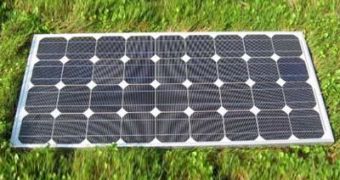Recent news from Spain informs us that the country's high officials have decided to invest in the development of a national solar-power industry. Thus, their main goal is to start manufacturing cheaper solar cells, whilst at the same time abiding by current efficiency standards.
In order to make solar cells, manufacturing companies typically resort to indium or cadmium, which are rather rare and therefore quite expensive elements.
However, as of 2010, IMB succeeded in producing thin film solar cells using readily available and low-cost materials such as zinc, iron, copper, tin and selenium.
Although these solar cells did not display the same efficiency levels as their more expensive counterparts, they nevertheless did their job and proved worthy of being used for a variety of applications.
As well as this, it seem that, in the case of these low-cost solar cells, the manufacturing process itself did not require vast amounts of money, as the fabrication methods are in themselves cheap: printing, spraying or dipping.
According to cleantechnica.com, the Catalonia Institute for Energy Research now means to give the green light to a three-year project that will employ IBM's aforementioned innovative technology and that will hopefully result in the mass-production of low-cost solar cells.
Scientists from the UK, Germany, Luxembourg, Italy, Switzerland and France are said to be working together with IREC on this project. This should come as no surprise, since all of these countries – the UK and Germany in particularly – are renowned for their willingness to invest in renewable energy sources.
As well as this, it seems that project managers have also contacted several companies that are to act as commercial partners.
Should things go as planned, IREC will have succeeded in proving that IBM's low-cost solar cells can step outside laboratory doors and demonstrate that they also have a commercial value.

 14 DAY TRIAL //
14 DAY TRIAL //